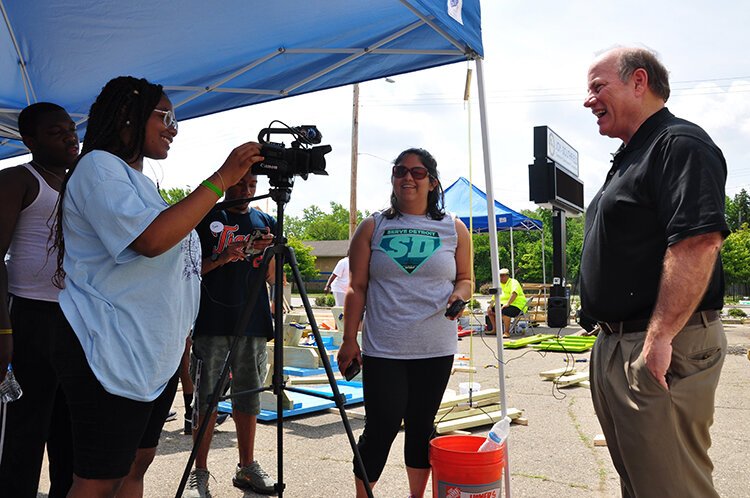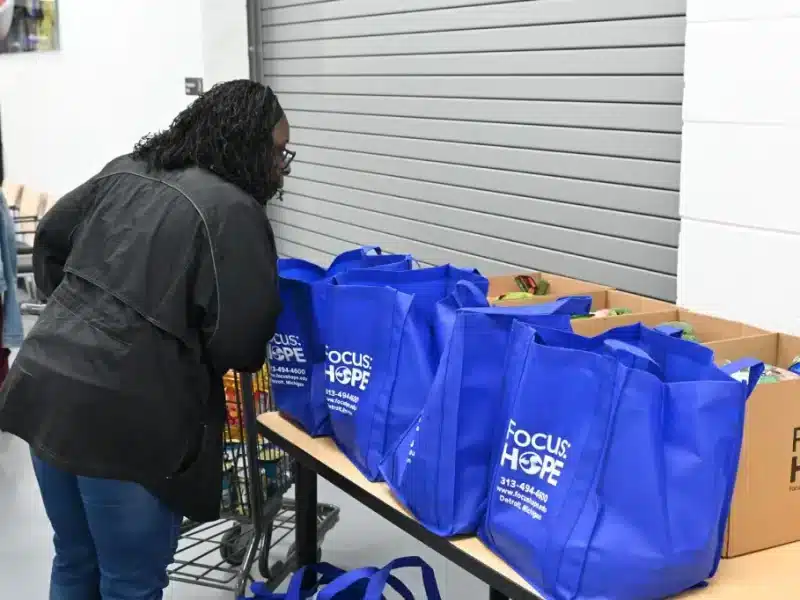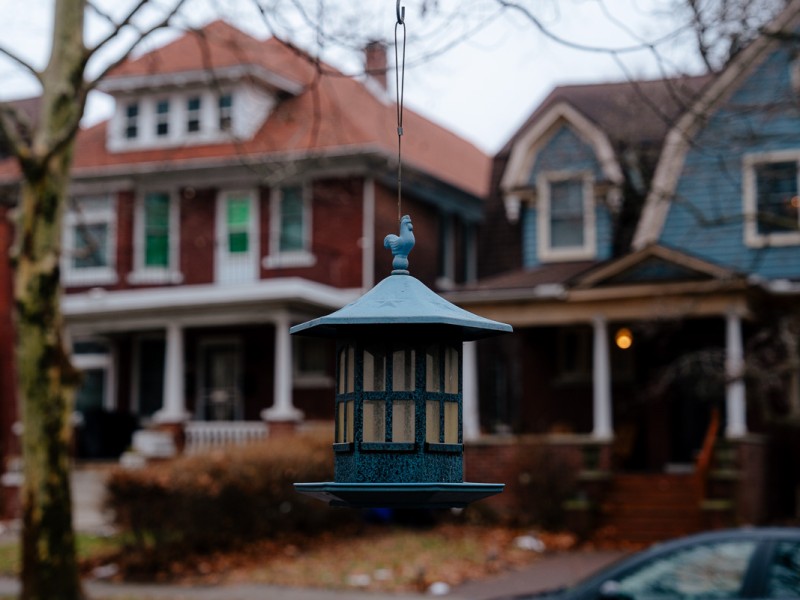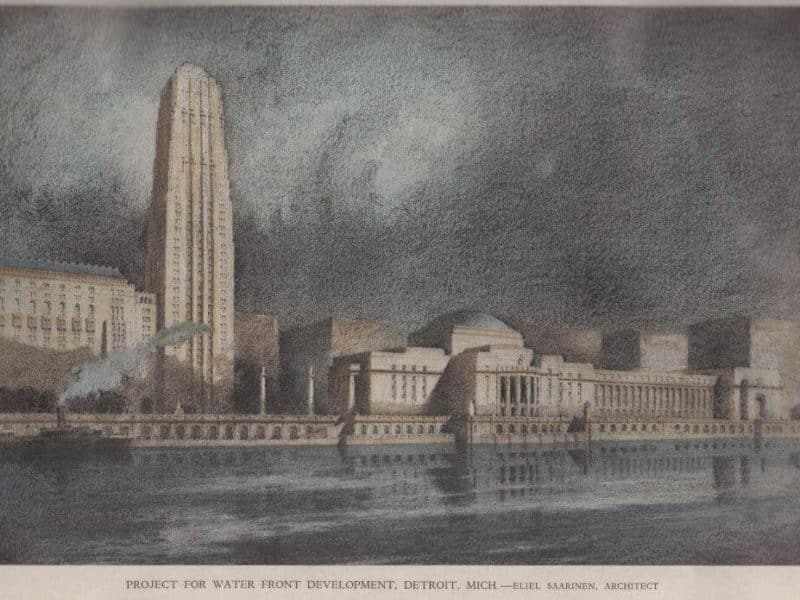Youths play key role in Warrendale Cody Rouge revitalization plan
Nine local teens, many who have participated in the Cody Rouge Action Alliance Youth Council, and who live, work, worship, or attend school in the neighborhood, are making these development plans for their community alongside the city and adult residents.
Youth are at the forefront of community planning in the Warrendale/Cody Rouge neighborhood, where the city has recently announced a partnership with Huntington Bank to support a child-centric plan of action, co-crafted by residents and the city, through the Strategic Neighborhoods and Affordable Housing Leverage Funds.
Mayor Mike Duggan spoke on the partnership at a press conference held at Brennan Pool in Rouge Park on Aug. 21. Seven major funders have committed $5 million over five years to support 10 individualized neighborhood revitalization plans, each with consistent resident input.
The Warrendale/Cody Rouge Neighborhood Framework Plan is unique in that it focuses on making improvements through a youth-centric lens. In addition to general economic development, affordable housing, and beautification, in its brainstorming phase, the plan also looks at kid-friendly transportation and spaces for youth entrepreneurship, education, artistic creation, and play.
Nine local teens, many who have participated in the Cody Rouge Community Action Alliance Youth Council, and who live, work, worship, or attend school in the neighborhood, became involved in the planning process for their community last February through a Neighborhood Framework Investigation and the forming of an organizational steering committee facilitated by the city of Detroit’s Planning and Development Department with consultants HECTOR urban design.
This is the first ever undertaking of the city to put youth at the forefront of the planning process. The goal is to guide future growth and investment in a neighborhood that holds the city’s second-largest population of school-age children, with one-third of its residents under 18 years of age, according to Data Driven Detroit.
“The idea is that these kids will be the stewards of this land, and of these projects, and of this neighborhood for much longer than any of the rest of us will be,” says Matt Williams, project manager for the city of Detroit Planning and Development Department.
The goal of the Neighborhood Framework Investigation, Williams says, was to build further agency within the teens before they joined the planning process. His team and HECTOR developed a curriculum and rubric to clarify how the Planning and Development Department works and to help the teens pinpoint local leaders, understand how decisions are made in their community, and begin to register what types of planning ideas might be feasible and what their implementation could look like.
Taylin Hodges, 16, joined the investigation and planning process after having often expressed to her parents a desire to find concrete ways to improve her neighborhood. As someone who loves the outdoors and has a fondness for animals, she says those talks were often triggered by issues of litter, trash, and critter control.
“Sometimes I feel the youth don’t always get a say,” Hodges shared at a community meeting held this past spring to kick off the framework plan process. “We usually get things decided for us. But we came, and demanded a say for our community.”
The steering committee incorporates 11 Warrendale/Cody Rouge resident and community organizations and recently includes nearly two dozen young people who have participated in the project’s springtime Neighborhood Framework Investigation and it’s summertime We Built This and Detroit Youth Urbanism Summit.
The teens’ many interviews during the investigation phase included community leaders such as Duggan, Maurice Cox, the city of Detroit’s planning director; and Tonya Allen, Skillman Foundation president and CEO.
“The goal,” Williams says, “was to then go to the proverbial drawing board with this informed series of recommendations on projects that could happen in the community, and start to draw them in a way that our young people feel an agency in: in keeping them up, in participating and activating said sites, as they will be the prime users, given populations tend to stay somewhere close to where they were born.”
“The project was completely different than how I originally thought it was going to be,” Hodges says, “I felt like it was gonna be, like, sitting in a classroom having nine-hour discussions about different things. But it’s actually much more hands-on than that. We got to interview city officials, we got to go out and build things, talk to residents, draw out our ideas. My opinion matters,” she says, “way more than I thought it was going to.”
The current economic plan looks to create places in which young people can become entrepreneurs or showcase their artistic talents by activating vacant space along the commercial corridor with the intent of making a kid-friendly storefront and a teen center.
Hodges says ideas for the center include a comfy hangout space, a music studio, and room for dance. Also on the wish list are an art room, an auto shop, and a garden, as well as classes on basic life skills: finance and food preparation.
“We want it to be a place where kids can go and have fun, but they can also learn new things that they aren’t able to explore.” she says.
Halfway into the year-long planning process, Williams says this will all get fleshed out over the next six months. A streetscape element is part of the conversation as well. Maybe it’s living landscapes, interactive bus stops, or designated places of play along Main Street (Warren Avenue or Joy Road). Transportation may also have a youth-centric lens, such as scooter lanes alongside pedestrian bike lanes, scooter docking stations, or free MoGo for kids from school grounds to places like the library or the entrepreneurial center.
Kenyetta Campbell, executive director of the Cody Rouge Community Action Alliance, and a member of the plan’s steering committee says another youth-focus concern is street safety, which she hopes will be addressed through measures like speed bumps, the tearing down of abandoned houses, and the revisioning of vacant lots.
Though maybe not in the plans this year, she says teens would love to see an amphitheater in Stein Park as well as a venue that provides go-karts or laser tag.
Some of the quick-action ways the group has been able to alter the current neighborhood landscape has been in identifying projects that can be done with minimal supplies and good old-fashioned sweat equity.
In June, the planning committee, in partnership with several community organizations and local volunteers, held a neighborhood picnic table build to construct eight tables, which were distributed across five vacant lots. Six weeks later, participants and funders in the annual Grow Cody week event installed fences, flowers, inground lights, and signage to the new pocket yards.
As a planner, Williams says projects like these are exciting to participate in. That there’s a waiting process that comes with city government transparency, and these smaller initiatives are helpful to keep up engagement and to maximize the communal energy.
As to youth involvement in this neighborhood framework development, Campbell, who was born and raised in Cody Rouge and has been leading community building efforts there for over 15 years, says it’s a good thing.
“They’re not just coming to meetings. They’re actually learning about planning, they’re giving their input, they’re interviewing the community stakeholders. It’s really been a great process thus far.”
Hodges is hoping the model will catch on across the city and elsewhere. “A lot of teens should be able to experience this type of thing. We are the future generation, so I feel it’s important to get our opinion on a lot of things.”
But, she says, it’s even more than building things for youth with the youth. It’s giving young people the opportunity to contribute to the community at large, to create a better place for their neighbors and themselves.
“I feel overall, we should do more things like this, that the community hasn’t really had, where their opinion is really valued.”







